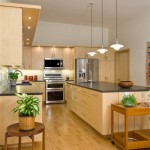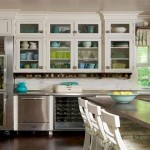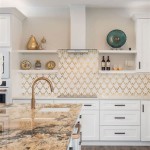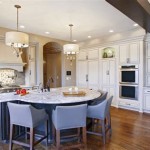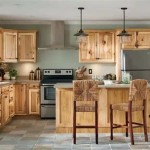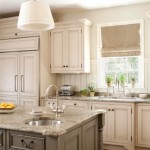Glass Cutting Boards: A Modern Kitchen Staple
Glass cutting boards have emerged as a popular alternative to traditional wood and plastic cutting boards in modern kitchens. While offering a sleek and contemporary aesthetic, their suitability for food preparation is a subject of ongoing discussion. This article aims to provide a comprehensive overview of glass cutting boards, examining their advantages, disadvantages, and key considerations for their use.
The construction of glass cutting boards typically involves tempered glass, which undergoes a process of controlled thermal or chemical treatment to increase its strength compared to normal glass. This tempering process enhances the glass's resistance to shattering and makes it more suitable for kitchen use where impact and temperature fluctuations are common. Some glass cutting boards also feature textured surfaces designed to provide a better grip and prevent food from slipping during cutting. The availability of various sizes, shapes, and designs contributes to their appeal, allowing consumers to choose boards that complement their kitchen décor.
Durability and Hygiene
One of the primary arguments in favor of glass cutting boards centers around their durability and hygienic properties. Tempered glass is inherently non-porous, meaning it does not absorb liquids or harbor bacteria as readily as wood or plastic. This characteristic makes glass cutting boards easier to clean and sanitize. They can typically be washed in a dishwasher or wiped down with soap and water, offering a convenient and efficient cleaning process. The non-porous surface also prevents the absorption of odors and flavors from food, ensuring that subsequent food preparations are not tainted. This resistance to staining and odor retention contributes significantly to their perceived hygienic advantage.
However, the durability of glass cutting boards is not without its limitations. While tempered glass is stronger than standard glass, it is still susceptible to chipping or shattering under significant impact. Dropping heavy objects onto a glass cutting board or subjecting it to extreme temperature changes can compromise its structural integrity. Furthermore, the abrasive nature of glass can dull knives more quickly than wood or plastic. This can lead to increased knife maintenance and potentially impact the overall cutting experience. The hardness of the glass surface also contributes to the noise generated during cutting, which some users find to be distracting or unpleasant.
From a hygiene perspective, proper cleaning and maintenance are crucial regardless of the cutting board material. While glass cutting boards are easier to sanitize, neglecting to clean them thoroughly can still lead to bacterial growth. Food particles trapped on the surface or in scratches, if present, can provide a breeding ground for microorganisms. Therefore, regular and thorough cleaning practices are essential to maintaining a safe and hygienic food preparation environment.
Impact on Knife Sharpness
The hardness of glass is a significant factor when considering its impact on knife sharpness. Glass is considerably harder than both wood and most plastics used in cutting boards. Repeated contact between a knife blade and a glass surface causes the blade's edge to dull more rapidly. This necessitates more frequent sharpening of knives to maintain optimal cutting performance. The dulling effect is particularly pronounced when using high-quality, sharp knives with fine edges. Some chefs and home cooks find this increased knife maintenance to be a significant drawback of using glass cutting boards.
To mitigate the dulling effect, some manufacturers produce glass cutting boards with textured surfaces or specialized coatings intended to be slightly more forgiving on knife blades. These modifications aim to reduce the direct contact between the blade and the hard glass surface. However, even with these modifications, glass cutting boards generally require more frequent knife sharpening compared to wood or plastic alternatives. The frequency of sharpening depends on factors such as the type of knife, the cutting technique, and the frequency of use.
The choice between preserving knife sharpness and utilizing the hygienic benefits of glass cutting boards often involves a trade-off. Individuals who prioritize knife sharpness and prefer less frequent sharpening may opt for softer cutting board materials like wood or plastic. Those who value the ease of cleaning and sanitization offered by glass may be willing to accept the need for more frequent knife maintenance.
Safety and Practical Considerations
Several safety and practical considerations should be taken into account when using glass cutting boards. The potential for shattering is a primary concern. While tempered glass is designed to break into smaller, relatively harmless pieces, it is still important to handle broken glass with caution. Inspecting glass cutting boards regularly for chips or cracks is essential to prevent accidental breakage during use. Discarding damaged boards is recommended to avoid potential injuries.
The slippery surface of some glass cutting boards can also pose a safety hazard. Ensuring that the board is placed on a stable, non-slip surface is crucial to prevent it from sliding during cutting. Using a damp cloth or a non-slip mat underneath the board can help to improve stability. Additionally, cutting techniques that minimize the risk of slippage are recommended. Applying firm pressure and maintaining a controlled cutting motion can help to prevent accidents.
From a practical perspective, the noise generated during cutting on a glass surface can be a nuisance for some users. The clattering sound of a knife against glass can be amplified in quiet kitchens, potentially disrupting conversations or causing discomfort. Furthermore, the lack of give in the glass surface can make it less comfortable to chop or dice large quantities of food. The unyielding surface can transmit vibrations through the arm and hand, potentially leading to fatigue or discomfort over extended periods of use.
The weight of glass cutting boards can also be a factor for some users. Glass is generally heavier than plastic and can be comparable to some types of wood. This can make glass cutting boards more difficult to maneuver and store, particularly for individuals with limited strength or dexterity. The weight can also be a consideration when washing and drying the boards.
Ultimately, the decision of whether to use glass cutting boards depends on individual preferences and priorities. Factors such as hygiene concerns, knife sharpness maintenance, safety considerations, and personal comfort should all be weighed when making this choice. While glass cutting boards offer certain advantages in terms of cleanliness and aesthetics, they also present potential drawbacks that need to be carefully considered.

Why You Should Never Use A Glass Cutting Board America S Test Kitchen

Glass Cutting Boards

Glass Chopping Board Orchard Bay Steps St Lawrence Chad Powell Photography

Counterart Herb Garden 5mm Tempered Glass Cutting Board Instant Counter 20 5 By 11 75
Large Anti Mildew Antibacterial Tempered Glass Cutting Board Baby Food Chopping Fruit Base Kitchen Shopee Singapore

Wholesale Globleland 4pcs Sublimation Glass Cutting Boards Rectangle Tempered Blanks For Heat Press Printing Kitchen Vegetable Pandahall Com

Lovely Lemons Personalized Round Glass Cutting Board 8 Inch

Glass Worktop Saver Clear 40 X 30 Large Kitchen Chopping Board Ebay

Multicoloured Glass Cutting Board Heat Resistant Chopping Kitchen Worktop Saver Countertop Surface Protector 40

Whimsislice Glass Chopping Boards Unique Art Designs Fun Functional Kitchen Decor
See Also

